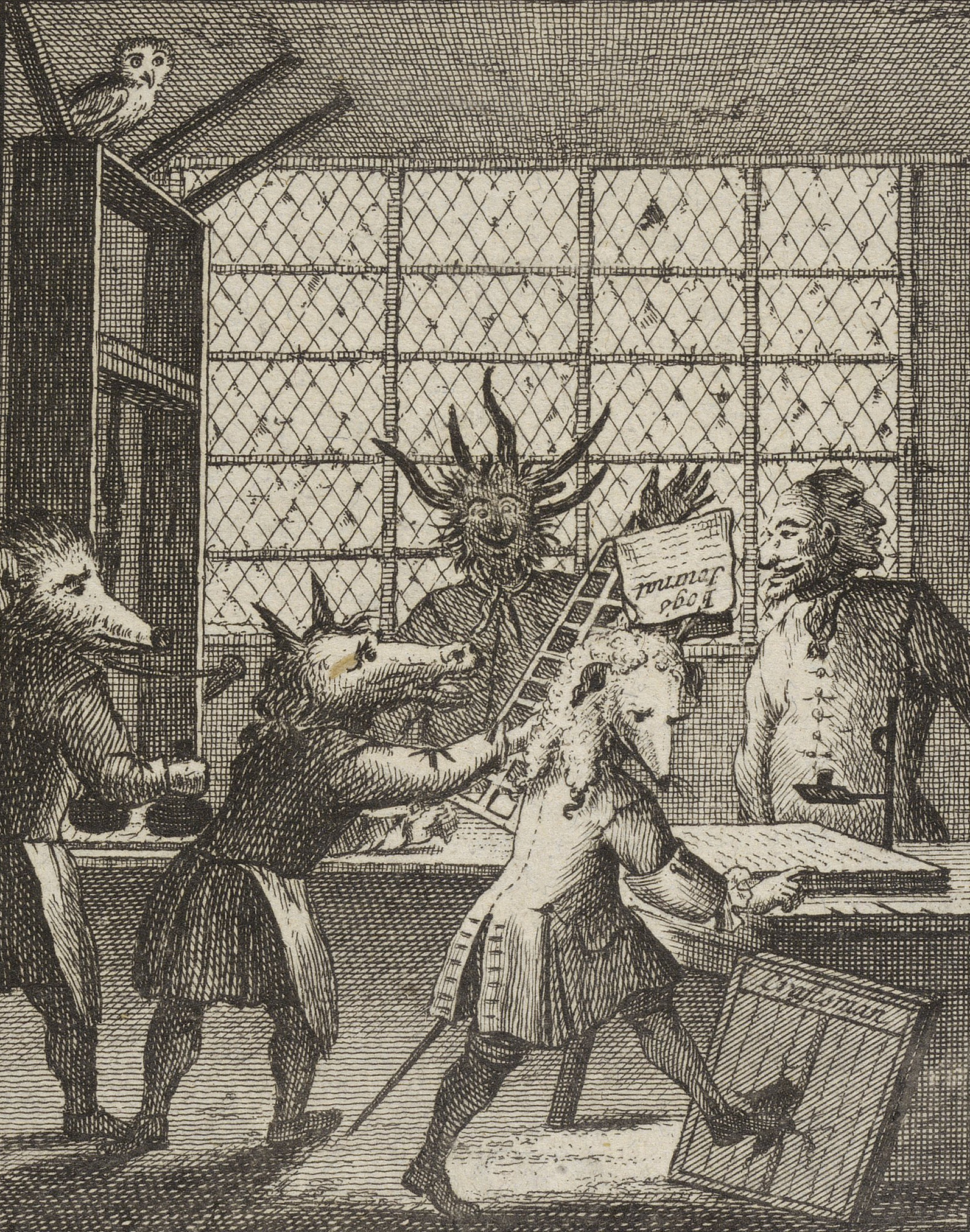
The Art and Mystery of Printing Emblematically
1732
Courtesy of the Folger Shakespeare Library.
The "Literatory" of Edmund Curll was featured as a headpiece on The Grub-street Journal for Thursday, 26 October 1732 (this image) and again on Monday 30 October (numbers 147 and 148). Bavius explains in the "Explications of the picture" (number 148):
The grand figure I take to be a bookseller, who has as much occasion for two faces in the way of trade, as persons in any other business. To a customer, who asks him how such a book sells, it is proper to answer with a brisk countenance, Extremely well. But if the author asks the same question, he must look grave, shake his head, and say, Very indifferently. What was sayed in relation to the same printer’s being concerned in printing weekly papers, pamphlets, or books, written in direct opposition to each other, is equally applicable to booksellers: Nay, they have frequently employed persons to write answers to books printed for themselves, in order to make them sell the better and sometimes an author has been employed to answer himself. The same bookseller has frequently, printed, at his own charge, religious and impious, godly and lewd books. This sufficiently justifies the application of the figure with two faces — In the attitude in which he is placed, he may be supposed as giving his orders to his slaves the printers, who work like horses, grunt like hogs, and fawn upon him like dogs. Or else he may be considered as giving directions to his authors, to write poetical, political, historical, theological, or bawdy books; which authors are properly represented by the gentlemen who have the heads of a dog, a horse, or a swine, and are accordingly treated by him like spaniels, hackneys, and hogs.
The Craftsman was a Whig paper founded at the end of 1726 by Henry St. John, Viscount Bolingbroke and William Pulteney, leaders of the opposition to Prime Minister Robert Walpole. The paper was edited by journalist Nicholas Amhurst under the pseudonym Caleb D’Anvers, and published by the printer Richard Francklin, an occasional partner of Edmund Curll’s. Fog’s Weekly Journal was the successor to Mist’s Weekly Journal, a paper published by Jacobite printer and publisher Nathaniel Mist in opposition to the Whig government and the Hanoverian monarchy. Regularly in trouble with the law for his publications, Mist, no friend to Curll, had finally fled to France in 1728 after being found guilty of a libel on King George I, and his journal carried on under the name of Fog's.
Curll also appears as a devil in this headpiece.
See Pat Rogers, "The Public Ear, 1730–34," in The Poet and the Publisher: The Case of Alexander Pope, Esq., of Twickenham Versus Edmund Curll, Bookseller in Grub Street (Reaktion Books, 2021).
This image is provided courtesy of Folger Shakespeare Library under a Creative Commons Attribution-ShareAlike 4.0 International License (CC BY-SA 4.0). It is considered to be in the public domain by other institutions in the United States.